Most UX professionals remember their first workshop anxiety. That blank agenda can feel daunting. Many wonder how they’ll turn a group of participants into a team that works together and delivers meaningful results.
Success in UX workshops demands more than putting people together in a room or virtual space. Our experience with hundreds of UX design workshops shows that the right mix of activities, techniques, and preparation separates productive sessions from time-wasters.
This detailed guide walks you through each step to conduct effective UX workshops. You’ll find practical strategies, proven activities, and expert tips that help you lead sessions with real value for your team and stakeholders. These insights work equally well if you’re planning your first workshop or looking to improve your existing methods.
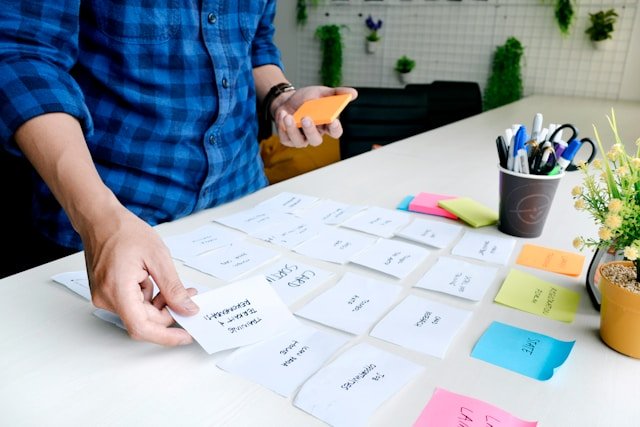
Photo by UX Indonesia on Unsplash
What is a UX design workshop and why do you need one?
UX workshops are a powerful tool in our design process. These workshops are intensive collaborative sessions that bring different minds together to solve
challenges and push the design timeline forward. Regular meetings pale in comparison to these carefully planned experiences where teams create tangible outcomes through real work.
UX workshops differ from regular meetings in several significant ways. Regular meetings focus on passive information sharing, but workshops create dynamic
spaces where people actively solve problems and create solutions. They need more preparation time and focus. The investment pays off by a lot.
Our design process uses UX workshops for:
- Project initiation and strategy development
- User empathy and journey mapping
- Design critique and feedback sessions
- Decision-making and team coordination
- Requirements gathering and finding solutions
- Co-design and ideation
These workshops create “exponential brainpower” which makes them valuable. Multiple points of view come together in a structured environment to accomplish in hours what could take weeks of solo work. Teams build stronger bonds and better project coordination through these shared experiences.
The workshops thrive on their active nature. They differ from focus groups where people just share opinions. Our workshops create engineered spaces where real progress happens. Each person plays an active role to move the project forward as they map user trips, brainstorm solutions, or make critical design decisions.
We found that there was a fascinating way workshops add to other UX activities instead of replacing them. They speed up insight gathering and help build consensus. Teams generate innovative solutions through shared creativity.
A UX workshop functions as a collaborative powerhouse. Stakeholders create and work together instead of just attending. Business goals connect with user needs as ideas become practical plans. Teams arrange themselves around shared goals. Breakthrough moments happen naturally when different points of view come together in a structured, interactive environment. Such moments rarely occur in regular meetings or individual work sessions.
Planning Your UX Workshop Strategy
Success in UX workshops depends on careful planning. Our experience shows that a well-planned workshop strategy can transform a directionless meeting into a productive session.

Photo by Glenn Carstens-Peters on Unsplash
Defining Clear Workshop Objectives
The workshop needs concrete objectives from the start. We begin by writing a “workshop goal statement” that describes our desired end state. Effective workshops
usually line up with these core objectives:
- Reaching consensus on project direction
- Gathering critical user insights
- Generating innovative solutions
- Building cross-team relationships
- Creating practical roadmaps
Selecting the Right Workshop Format
Our workshop’s format should support its objectives directly. Different goals need different approaches. Discovery workshops need formal environments with plenty of whiteboard space for structured discussions. Empathy workshops work better in relaxed settings that encourage brainstorming and intuitive thinking.
Creating a Detailed Workshop Timeline
Time management is vital to workshop success. Our timeline comes together through these steps:
1. Calculate accurate time estimates for each activity (adding 5 minutes buffer per task)
2. Schedule strategic breaks to manage participant’s energy
3. Plan pre-workshop preparation time
4. Include time for setup and technical checks
5. Allow flexibility for valuable unexpected discussions
The workshop strategy requires all materials ready before the session starts. This means having templates, pre-filled documents, and virtual boards ready for remote participants. Each team member’s role must be clear – someone handles logistics, another manages technical setup, while others help with facilitation.
Our planning revolves around the “6-step systematic approach”. This framework helps create focused agendas that match our workshop objectives perfectly. Quick pre-workshop calls with the core team prevent surprises that could derail the session.
Remote or hybrid workshops need extra planning layers. Digital tools must support our objectives, and all participants should access them easily. We test different platforms and create backup plans for technical issues.
The goal extends beyond just running a workshop. We aim to create an environment where meaningful collaboration thrives. Time invested in thorough planning sets the stage for success before participants arrive.
Essential Pre-Workshop Preparation Steps
Complete preparation is the backbone of every successful UX workshop. Time invested in setup and organization can improve workshop outcomes dramatically.
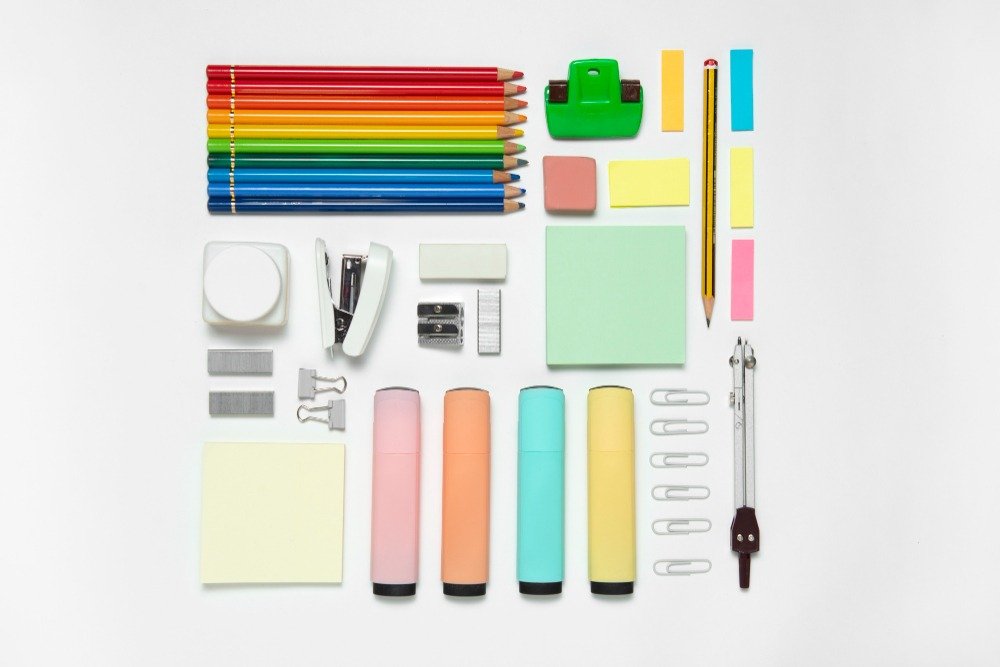
Developing Workshop Materials and Templates
We start our preparation by creating complete workshop materials. Available facts help us pre-fill workshop canvases partially to provide structure and context. Digital templates remain available and user-friendly for remote workshops.
Our key workshop materials include:
- Whiteboard templates for journey mapping
- Digital collaboration boards
- Pre-workshop questionnaires
- Reference documents
- Activity guidelines
Setting Up Digital and Physical Tools
The right tools can make or break a workshop. Physical workshops need whiteboards and colorful markers to boost creativity and teamwork. Remote sessions work best with digital tools that support teamwork in real-time while staying easy to use.
Hybrid workshops need an inclusive environment. We test video conferencing setups and ensure stable internet connections with mobile networks as backup. A local assistant at each remote location helps manage logistics and keeps workshop flow smooth.
Preparing Participant Guidelines
Clear communication leads to workshop success. Pre-workshop information packages we send include:
- 1. Workshop Agenda: Activity timeframes and break periods
- 2. Tool Instructions: Details for new digital platforms
- 3. Participation Expectations: Including our “no devices” policy during active sessions
- 4. Pre-work Requirements: Participant’s preparation needs
Brief pre-workshop calls with key stakeholders help prevent disruptions. These calls let us understand concerns and adjust our approach. We pick participants who have contributed to research studies before, which ensures valuable input for workshops with users.
Groups of 6-12 participants create an environment that maximizes participation while staying manageable. This size allows different points of view while keeping sessions focused and productive.
Choosing Effective Workshop Activities
The right combination of activities can change a standard UX workshop into a productive and engaging session. Our team has found that successful workshops need seven core activities. These activities can be mixed and matched to achieve any workshop objective.
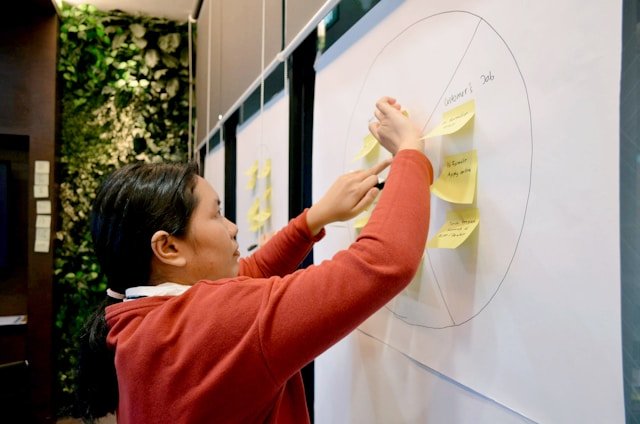
Photo by UX Indonesia on Unsplash
Ice-breaker Activities for Different Group Sizes
The right ice-breaker creates the perfect atmosphere for your workshop. These activities have proven highly effective:
- 1. Two Truths and One Lie: Perfect for groups of 5-10 people, participants write three statements about themselves
- 2. Super Power Share: Ideal for corporate settings, each person shares their unique contribution
- 3. Step-in Circle: Great for larger groups, especially after lunch breaks to re-energize participants
- 4. Lego Character Creation: Best for creative teams, participants build and explain their Lego avatar
Core UX Workshop Exercises
These fundamental activities create the backbone of any successful UX session:
- 1. Post-Up Exercise: Individual idea generation on sticky notes promotes democratic participation and diverse views
- 2. Affinity Diagramming: Teams cluster information into relational groups to find patterns across ideas
- 3. Landscape Mapping: Teams understand relationships between different elements, which works well for journey mapping
- 4. Storyboarding: This adds context to ideas and communicates user scenarios effectively
- 5. Forced Ranking: Teams make clear decisions through prioritization exercises
- 6. Role Playing: Teams challenge assumptions and explore different views
- 7. Playback Sessions: Regular progress sharing creates better understanding and alignment
Backup Activities for Time Management
Additional activities serve as time buffers. Workshop timing can be unpredictable, so these backup exercises come in handy:
Energy levels often drop after lunch. Movement-based activities like the “Step-in Circle” help participants stay focused. Remote workshops need digital tools that support collaborative exercises while keeping everyone engaged.
Creative tools like markers and blank paper for sketching, combined with dot-voting materials for prioritization, help maintain workshop momentum. Remote sessions need digital alternatives. Platforms like Miro work well for journey mapping and Google Docs enables collaborative ideation.
The success of activity selection depends on how well exercises match workshop objectives. Each activity should contribute meaningfully to the overall workshop goals.
Measuring Workshop Success
Success measurement of our UX workshops plays a vital role in continuous improvement and shows value to stakeholders. We have created a systematic way to assess success and optimize meaningful outcomes.
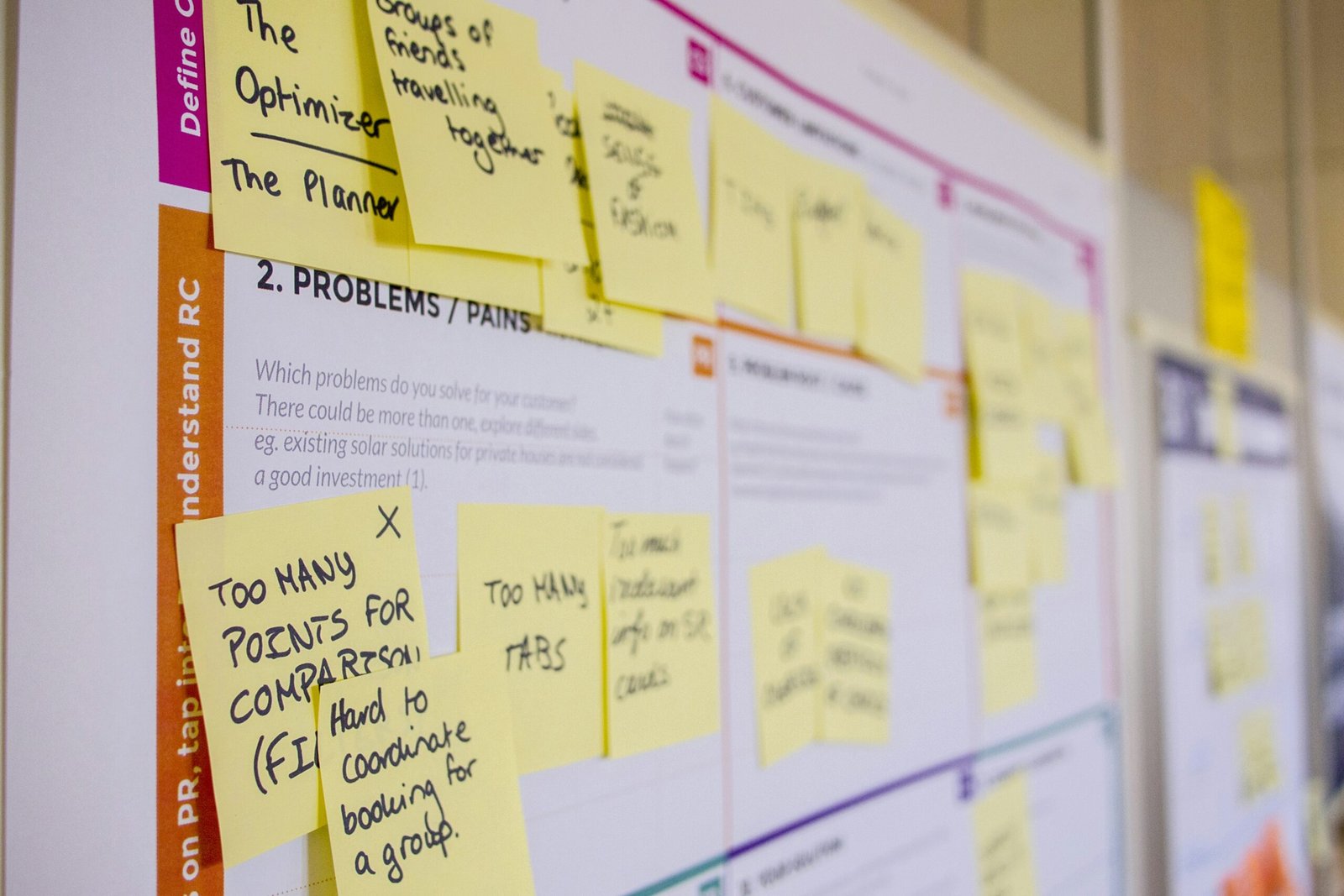
Photo by Daria Nepriakhina 🇺🇦 on Unsplash
Collecting Participant Feedback
Gathering immediate and applicable feedback matters most. Research shows participants give better feedback after completing actual tasks instead of interruptions during workshops. We combine several methods effectively:
- Anonymous questionnaires (maximum 4-5 questions)
- Post-workshop satisfaction surveys
- Digital feedback forms
- Up-to-the-minute observation notes
Feedback collection right after workshop activities produces honest and valuable insights. Participants share genuine thoughts about improvements through our anonymous feedback system
Evaluating Workshop Outcomes
Our assessment combines qualitative and quantitative metrics to give a complete view of workshop success. Several key performance indicators help track progress:
Task success rates serve as primary metrics and help identify areas where participants struggled or excelled. Customer Satisfaction Scores (CSAT) and Net Promoter Scores (NPS) complement this by measuring overall workshop effectiveness.
The outcome analysis focuses on:
- Completion rates of workshop objectives
- Quality of generated solutions
- Participant participation levels
- Implementation feasibility of ideas
Numbers combined with qualitative feedback give the best understanding of workshop success. This approach reveals patterns and themes that might go unnoticed with just numerical data.
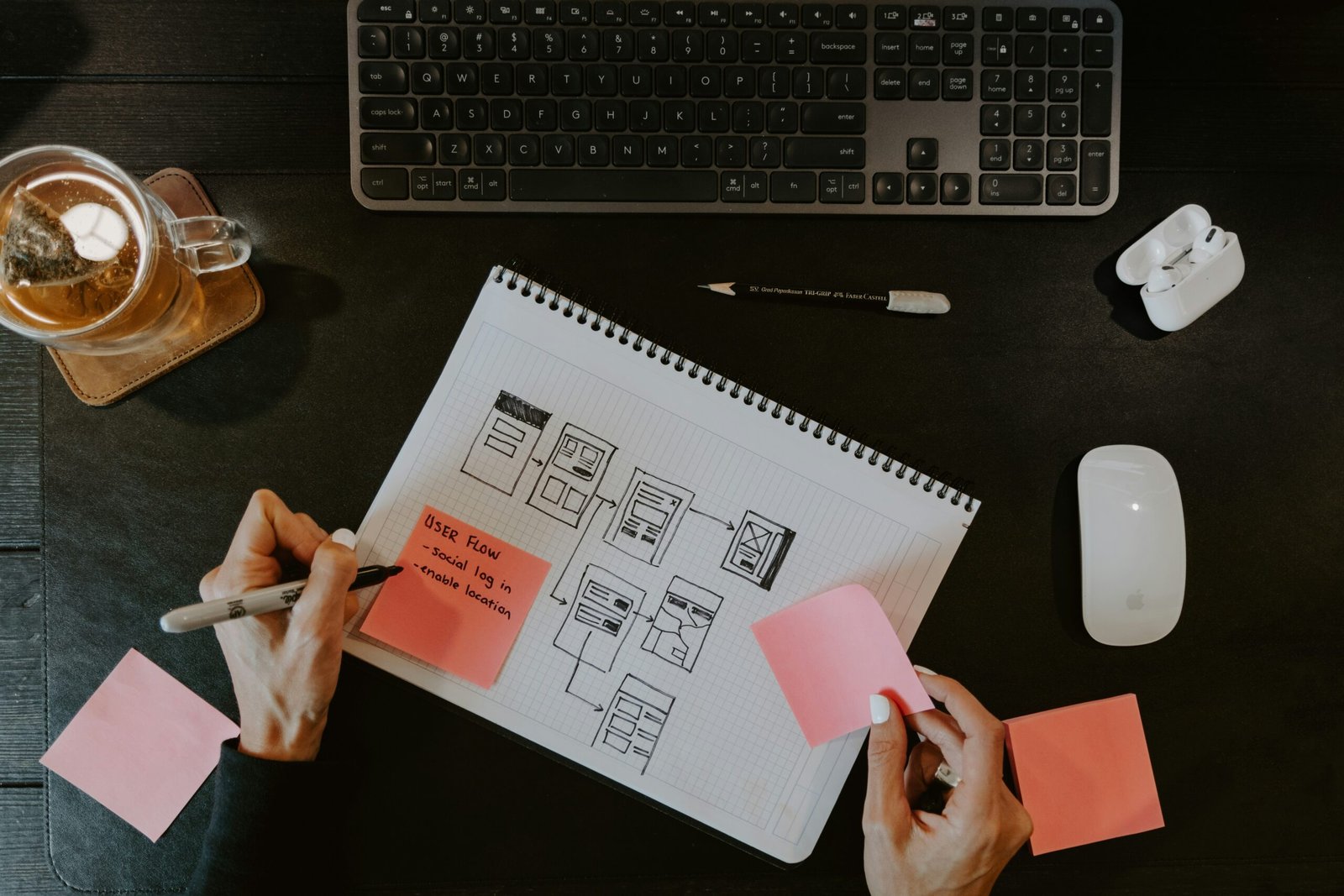
Photo by Kelly Sikkema on Unsplash
Creating Action Plans
Our action plans follow the “UX-focused framework” and turn workshop insights into real improvements. Experience shows effective UX action plans need three
vital elements:
- Understanding of team and project needs
- Defined focus areas for value-added activities
- Clear commitments with timeline
Goals rather than activities form the foundation of our action plans. This arrangement works better with overall project objectives. Each action item clearly defines:
Responsibility Assignment: Specific team members take ownership of each task.
Timeline Development: Realistic deadlines consider both immediate needs and long-term goals.
Success Metrics: Concrete progress measurements use both quantitative and qualitative indicators.
Successful action plans maintain “UX best practice alignment” and focus on design activities alongside collaboration and communication. Regular monitoring and analysis of metrics helps optimize and improve continuously.
Regular check-ins review progress and adjust approaches based on emerging needs. This iterative process delivers value while adapting to changing requirements.
Conclusion
Heuristic evaluation stands as a powerful tool for identifying usability issues before they affect real users. Our comprehensive guide demo a UX workshops are powerful tools that change ideas into useful solutions. Our team’s experience with hundreds of workshops shows how good planning, thoughtful
activities, and skilled guidance help teams excel.
Teams achieve success through careful preparation and understanding of group dynamics. They adapt to different workshop formats in both physical and virtual spaces. Our method measures outcomes and delivers real value while teaching us ways to improve continuously.
Note that excellent UX workshops do more than create solutions. They build stronger teams that help stakeholders line up and generate innovative ideas to push projects forward. You should begin with small steps and focus on the simple techniques we’ve covered. Your workshop facilitation skills will grow with each session.
The outcomes prove our point. Teams investing time in well-laid-out UX workshops make faster and better decisions. They create solutions centered around user’s needs. These strategies can become your own tools to help your next UX workshop spark meaningful change.





